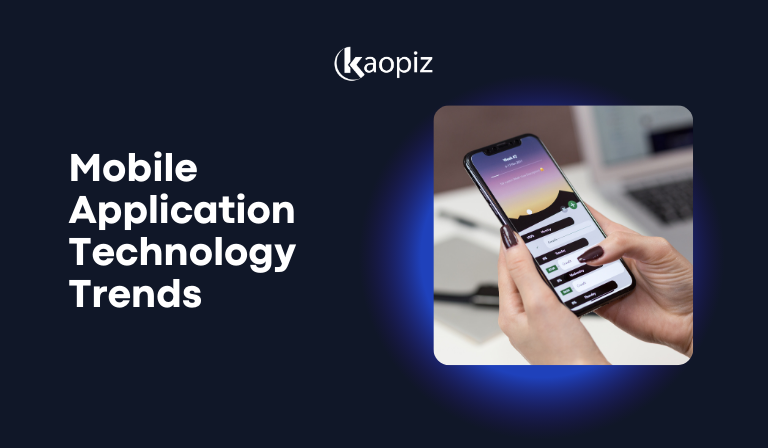Top 10 Web Development Trends in 2025: What’s Next for the Future of the Web
The world of web development is evolving faster than ever. With the rise of AI, new front-end frameworks, edge computing, and the growing demand for immersive and secure online experiences, businesses must adapt to stay competitive. In 2025, websites are no longer just digital brochures—they’re dynamic, intelligent platforms that drive engagement, personalization, and growth.
In this blog, we explore the top 10 web development trends in 2025, highlight key technologies leading the change, and show how your business can leverage them to build smarter, faster, and more impactful digital solutions.
Table of Contents
- Overview of the Web Development Industry
- Top 10 Web Development Trends in 2025
- Most Popular Web Development Technologies
- Embracing the Web Development Future with Kaopiz
- Conclusion
- FAQs
Overview of the Web Development Industry
The web development industry is on a strong upward trajectory. Valued at $74.69 billion in 2025, it is projected to reach $104.31 billion by 2030, growing at a CAGR of 6.91%. As businesses increasingly prioritize their online presence, the demand for professional web development is rising rapidly.
A well-designed website is no longer optional—it serves as a company’s digital storefront, critical to brand visibility, customer engagement, and sales. Research shows that 48% of users judge a business’s credibility based on its website design, while 80% will abandon a site if it’s not mobile-friendly.
Key drivers behind this growth include:
- A growing emphasis on user experience (UX) and mobile responsiveness
- The post-pandemic shift to e-commerce and digital platforms
- Rising demand for custom CMS solutions (WordPress, Shopify, Wix)
- The surge in mobile-first development and cross-platform web apps
Additionally, the retail sector continues to lead the market. With smartphones accounting for nearly 80% of global retail website visits, businesses are prioritizing mobile optimization, faster load times, and intuitive UI.
Top 10 Web Development Trends in 2025
As technology and user expectations continue to evolve, web development is entering a new era of speed, intelligence, and interactivity. Here are the latest trends in web development.
AI-Powered Web Experiences
Artificial Intelligence (AI) has become a cornerstone of modern web development, empowering developers and users alike. Whether through tools like AI chatbots, ChatGPT, Gemini, or Deepseek, AI is being used to create content, generate code, enhance designs, and personalize user experiences.
According to forecasts, the global AI market is expected to grow at a CAGR of 37% from 2024 to 2030, influencing nearly every industry, especially web development.

Key Applications of AI in Web Development:
- Code generation: Tools like GitHub Copilot use NLP to convert prompts into real-time code snippets.
- Design assistance: AI-powered platforms like Canva and Adobe Sensei enhance UI/UX with automated layout and image adjustments.
- Content creation: AI helps generate blog posts, images, and even videos with simple input commands.
- UX personalization: AI adapts website content, layout, and interactions based on user behavior and preferences.
- Testing and debugging: AI improves efficiency by quickly detecting bugs and UI inconsistencies.
AI technology is becoming one of the new trends in web development, delivering responsive, personalized, and future-ready web experiences.
Progressive Web Apps (PWAs)
PWAs are transforming web development by combining the best of web and mobile app experiences. As we approach 2025, PWAs are becoming more powerful, bridging the gap between browser-based access and native app functionality.
PWAs offer users a fast, reliable, and engaging experience—even in low-connectivity environments. With features like offline access, push notifications, and home screen installation, PWAs function like native apps without requiring downloads from app stores.
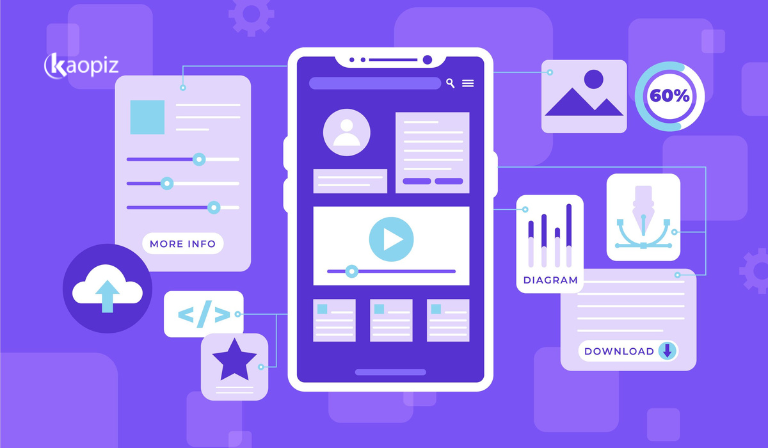
Real-World Impact:
- Tinder: Reduced load time from 11.91s to 4.69s; 90% smaller than the native app
- Twitter Lite: 75% increase in Tweets sent, 65% more pages viewed per session
- Pinterest: 40% higher engagement and 44% increase in ad revenue
- Forbes: 40% longer session times and triple the scroll depth
As PWAs continue to evolve, they are top web development industry trends setting new standards for speed, user experience, and accessibility.
Voice Search & Conversational Interfaces
Voice search is rapidly changing how users access and engage with web content. A PwC study revealed that 71% of users prefer voice over typing due to convenience, and nearly 90% are familiar with voice-assisted technology. This trend is expected to accelerate, with the voice recognition market projected to reach $15.87 billion by 2030.
Voice search introduces new interaction patterns and expectations. Unlike typed queries, voice queries are conversational and longer, often question-based, and heavily localized (e.g., “best coffee shop near me”).

To meet these new demands, developers must optimize websites with:
- Conversational keywords and natural language
- Structured content that targets featured snippets
- FAQ sections that directly answer common questions
- Mobile-friendly, fast-loading pages
As 75% of U.S. households are projected to own smart speakers by 2025, voice search optimization is no longer optional—it’s a core requirement for delivering accessible, user-friendly web experiences in a hands-free, voice-driven world.
Motion UI & Interactive Web Design
Motion UI is one of the future trends in web development, redefining how users interact with websites by introducing animations, transitions, and interactive elements that bring static pages to life. By integrating smooth scrolling, hover effects, dynamic backgrounds, and responsive transitions, Motion UI makes web interfaces more engaging, intuitive, and visually appealing.
Originally developed by ZURB, Motion UI is a powerful CSS library that allows developers to easily add animation effects, like sliding, fading, scaling, and bouncing, without the need for complex JavaScript.
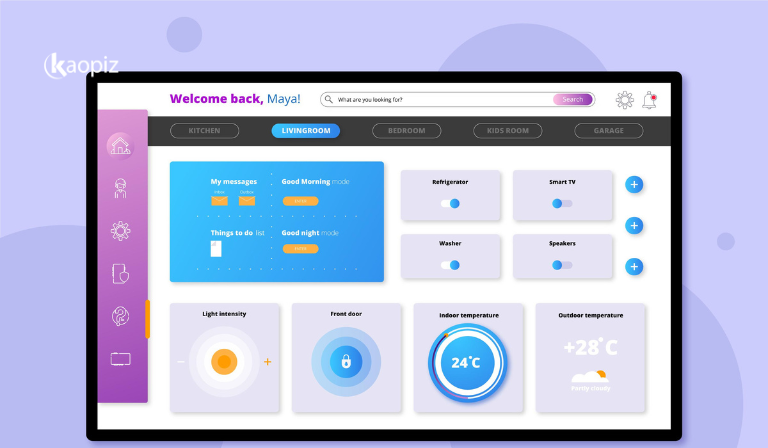
Examples in Action:
- Google Translate uses subtle motion to present gender-inclusive translations clearly and effectively.
- Whimsical adds delight to user authentication with a playful animated character.
- Airlines and booking sites use animated check-in progress bars to improve clarity and confidence.
- Download buttons turn wait times into interactive experiences with visual feedback.
Since attention spans shorten and users expect seamless interactions, Motion UI is becoming essential for creating engaging, modern web experiences that feel both functional and delightful.
API-First & Headless Architecture
With over two decades of evolution, Web APIs have become a core part of modern web development. In 2025, an increasing number of developers are adopting an API-first approach—prioritizing flexibility, speed, and multi-platform compatibility from day one.
In an API-first strategy, APIs are treated as first-class products. Developers design the API before building the frontend or backend, ensuring seamless integration across web, mobile, IoT, voice assistants, and even in-car or kiosk interfaces.

In parallel, headless architecture decouples the backend CMS from the frontend presentation layer. This allows developers to use any technology (like React or Vue) to display content, while the backend delivers structured data via APIs.
Together, API-first and headless approaches empower businesses to:
- Build omnichannel experiences
- Improve development efficiency and scalability
- Deliver consistent, personalized content anywhere users are
API-first and headless architecture enable businesses to build digital experiences that are modular, future-ready, and easily extendable, making them key web programming trends in 2025.
Low-Code/No-Code for Web Apps
Low-code and no-code platforms are revolutionizing web development by making application creation faster, more visual, and more accessible. As leading web development trends in 2025, these platforms empower both developers and non-technical users to build powerful web apps without writing extensive code.
Instead of traditional coding, users work with drag-and-drop interfaces, modular components, and visual workflows—dramatically reducing time-to-market and bridging the gap between IT and business teams.
Low-Code vs. No-Code:
- Low-code platforms require some coding skills and are ideal for developers looking to speed up routine tasks or prototype ideas quickly.
- No-code platforms are built for “citizen developers”—non-technical users who can build, test, and launch apps independently.
According to recent research, the global low-code development platform market was valued at $7.17 billion in 2024 and is expected to reach $59.78 billion by 2033, growing at a CAGR of 26.6% from 2025 to 2033.
While these platforms simplify development, complex projects still benefit from experienced developer oversight to ensure scalability, performance, and security. In 2025, low-code and no-code are not just trends—they’re key enablers of rapid digital transformation.
WebAssembly
WebAssembly (Wasm) enables near-native performance directly in the browser. Unlike JavaScript, which is interpreted at runtime, Wasm code is compiled into a compact binary format that browsers execute efficiently, unlocking powerful new capabilities for the web.

How WebAssembly Changes the Game:
- Exceptional Performance: Ideal for resource-intensive tasks like video processing, simulations, and gaming.
- Cross-Language Compatibility: Write in Rust, C++, Go, and compile to Wasm—no need to rely solely on JavaScript.
- Memory Efficiency: Operates closer to hardware for optimized memory usage and faster execution.
- JavaScript Interoperability: Easily integrates with existing JS frameworks, allowing gradual adoption without code rewrites.
Real-World Use Cases:
- Figma: Leveraged WebAssembly to reduce loading time by 3x, making its browser-based design tool as fast as a native app.
- Unity: Uses WebAssembly in WebGL to bring high-performance gaming to the browser, plugin-free.
- Fastly: Integrated Wasm into its Compute@Edge platform to execute serverless functions with ultra-low latency.
WebAssembly is one of the latest trends in web application development, allowing the web to handle more complex, high-performance tasks, bridging the gap between browser-based apps and native desktop software.
Web3 and Blockchain-Powered Applications
Web3 represents the next evolution of the internet—an ecosystem where decentralized applications (dApps) and blockchain technology give users more control over their data, identity, and online interactions. As one of the top web development trends for 2025, blockchain-powered apps are transforming how developers build secure, transparent, and trustless digital experiences.

Unlike traditional systems that rely on centralized databases, blockchain distributes data across a peer-to-peer network, eliminating single points of failure and enhancing system resilience. Each transaction is encrypted and recorded immutably, making data tamper-proof and verifiable by design.
Real-World Applications:
- Healthcare: Secure sharing of medical records and transparent drug supply chains
- Finance: Real-time settlements and reduced costs through blockchain solutions like JPMorgan’s Onyx
- Identity Management: Decentralized digital identities give users control over personal data
With platforms like Ethereum, Solana, and Polygon, developers can create scalable dApps and smart contracts that support everything from DeFi and NFTs to decentralized identity systems.
Cybersecurity Protocols
In an increasingly connected digital world, cybersecurity has become a cornerstone of modern web development. As cyber threats grow in volume and sophistication, businesses must prioritize strong cybersecurity protocols to protect user data, maintain trust, and comply with evolving regulations.

Web applications are frequent targets for attacks such as data breaches, cross-site scripting (XSS), SQL injections, and DDoS attacks. In response, developers are embedding security into every layer of the development process—shifting left and adopting a security-by-design approach.
Key Cybersecurity Practices in Web Development:
- HTTPS & SSL encryption: Ensures secure communication between users and servers
- Multi-Factor Authentication (MFA): Adds an extra layer of user account protection
- Content Security Policy (CSP): Prevents XSS attacks by controlling which resources can be loaded
- Secure coding standards: Following OWASP Top 10 guidelines to avoid common vulnerabilities
- Real-time threat detection and monitoring: Using AI and analytics for proactive defense
With more businesses shifting to cloud-based infrastructures, headless CMS, and API-first development, the attack surface has expanded, making robust cybersecurity protocols essential for all web projects.
Edge Computing
Edge computing is one of the current trends in web development and is reshaping the industry by moving data processing closer to the source rather than relying entirely on centralized data centers. As digital experiences become more dynamic and latency-sensitive, edge computing has emerged as a key web development trend for 2025.
According to IDC, global edge computing spending is expected to reach $378 billion in 2028. This rapid adoption is driven by the need for faster performance, improved data privacy, and more efficient resource utilization.
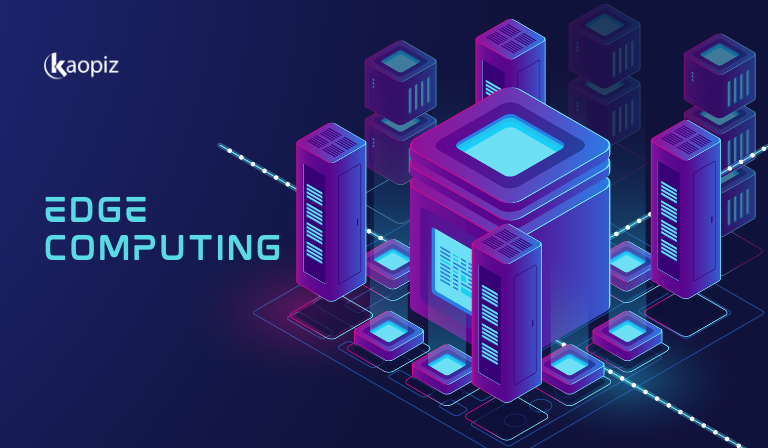
Real-World Applications:
- IoT Devices: Process commands directly on smart devices for faster, more efficient responses.
- Manufacturing: Enables real-time analytics and quality control on the factory floor.
- Video Streaming: Reduces lag in live video conferencing by handling data closer to the source.
- Smart Farming: Sensors analyze environmental data on-site to optimize water and nutrient use.
As web applications demand greater speed, security, and scalability, edge computing provides a distributed model that supports these priorities, making it an essential component of future-ready web development.
Most Popular Web Development Technologies
As the web development landscape evolves in 2025, developers have more tools and technologies than ever before to build fast, scalable, and feature-rich applications. Choosing the right tech stack is crucial for performance, flexibility, and long-term maintainability.
Here are the most popular and widely adopted web development technologies shaping the industry today:
Front-End Frameworks
- React: A powerful JavaScript library for building interactive UIs. Flexible, component-based, and backed by Meta.
- Angular: A comprehensive MVC framework by Google—great for enterprise-scale apps with structured architecture.
- Vue.js: Lightweight and beginner-friendly, Vue is praised for its simplicity and rapid development capability.
Back-End Frameworks
- Node.js: A high-performance JavaScript runtime used for building scalable server-side and real-time applications.
- PHP: A veteran language that still powers millions of websites, including WordPress.
- Python (Django): Offers clean syntax and rapid development, ideal for startups and data-driven platforms.
Other Trending Technologies
- Jamstack: Architecture for ultra-fast, secure static websites using APIs and pre-rendering.
- Headless CMS: Separates content from presentation, allowing developers to use any frontend while managing content via APIs.
Embracing the Web Development Future with Kaopiz
Businesses need web applications that are not only functional but also scalable, secure, and future-ready. At Kaopiz, we help our clients stay ahead of the curve by delivering custom web development services that align with today’s trends and tomorrow’s opportunities.
From web portals and e-commerce platforms to enterprise-grade systems and advanced analytics applications, our end-to-end services are designed to meet diverse business needs across industries and use cases.
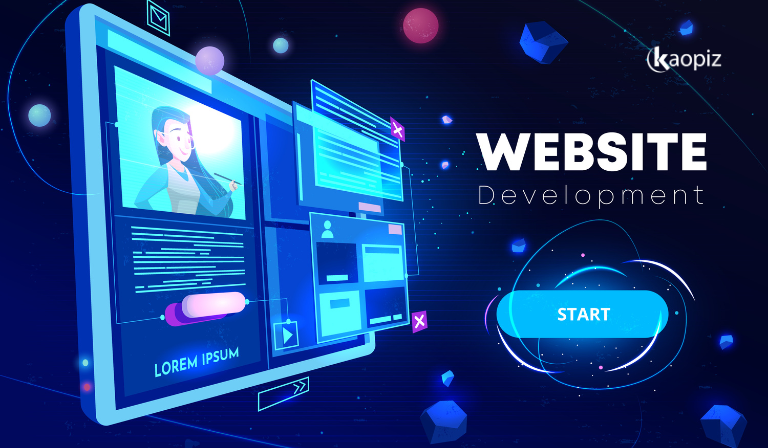
What Sets Our Development Apart:
- Business Analysis: We align IT efforts with business goals through detailed requirements engineering.
- UX/UI Design: User-first designs crafted for speed, accessibility, and aesthetic appeal.
- Solution Architecture: Scalable tech stacks and API structures that ensure smooth operations and extensibility.
- Front-End & Back-End Development: Expertise in Angular, React, Vue, .NET, Java, Node.js, Python, PHP, and more.
- Integration: Seamless connections with third-party systems, CRMs, ERPs, and internal tools.
- Quality Assurance: Full-cycle testing to ensure flawless functionality, security, and performance.
- Continuous Support & DevOps: Agile release cycles, urgent fixes within 1–2 days, and feature updates every 2–6 weeks.
Whether you’re modernizing legacy systems or launching an entirely new platform, Kaopiz is your partner for innovative, scalable web development.
Conclusion
Web development trends in 2025 are being shaped by rapid innovation, shifting user expectations, and emerging technologies like AI, PWAs, headless architecture, and Web3. To stay competitive, businesses must not only keep up with these trends but strategically embrace them to deliver faster, smarter, and more secure digital experiences.
Whether you’re building a new platform, enhancing an existing one, or exploring ways to modernize your digital presence, choosing the right technology and the right development partner is key.
At Kaopiz, we bring technical expertise, agile mindset, and industry insight to help you navigate this evolving landscape. From front-end frameworks to edge computing and blockchain integration, we’re here to turn your web vision into scalable, future-ready solutions. Let’s build the future of the web—together.
FAQs
Do I Need to Integrate AI or Chatbots into My Website?
If your business relies on customer interaction, support, or personalization, integrating AI or chatbots can significantly improve user experience and reduce operational costs. They provide real-time assistance, automate repetitive tasks, and help users navigate your site more efficiently. It’s a smart move for e-commerce, SaaS, finance, healthcare, and any user-facing platform.
Is Low-code or No-code Right for My Business?
Low-code/no-code platforms are ideal if you need to launch simple web apps quickly or empower non-technical teams to build solutions. They’re great for MVPs, internal tools, and rapid prototyping. However, for complex, scalable, or security-critical applications, a custom-coded approach by experienced developers is often more suitable.
Should I Hire an In-house Development Team or Outsource?
It depends on your project scope, timeline, and budget. In-house teams offer direct control but require higher investment in hiring, training, and infrastructure. Outsourcing to a trusted partner like Kaopiz provides access to a wide talent pool, scalable resources, and faster time-to-market, often at a more cost-effective rate.

















